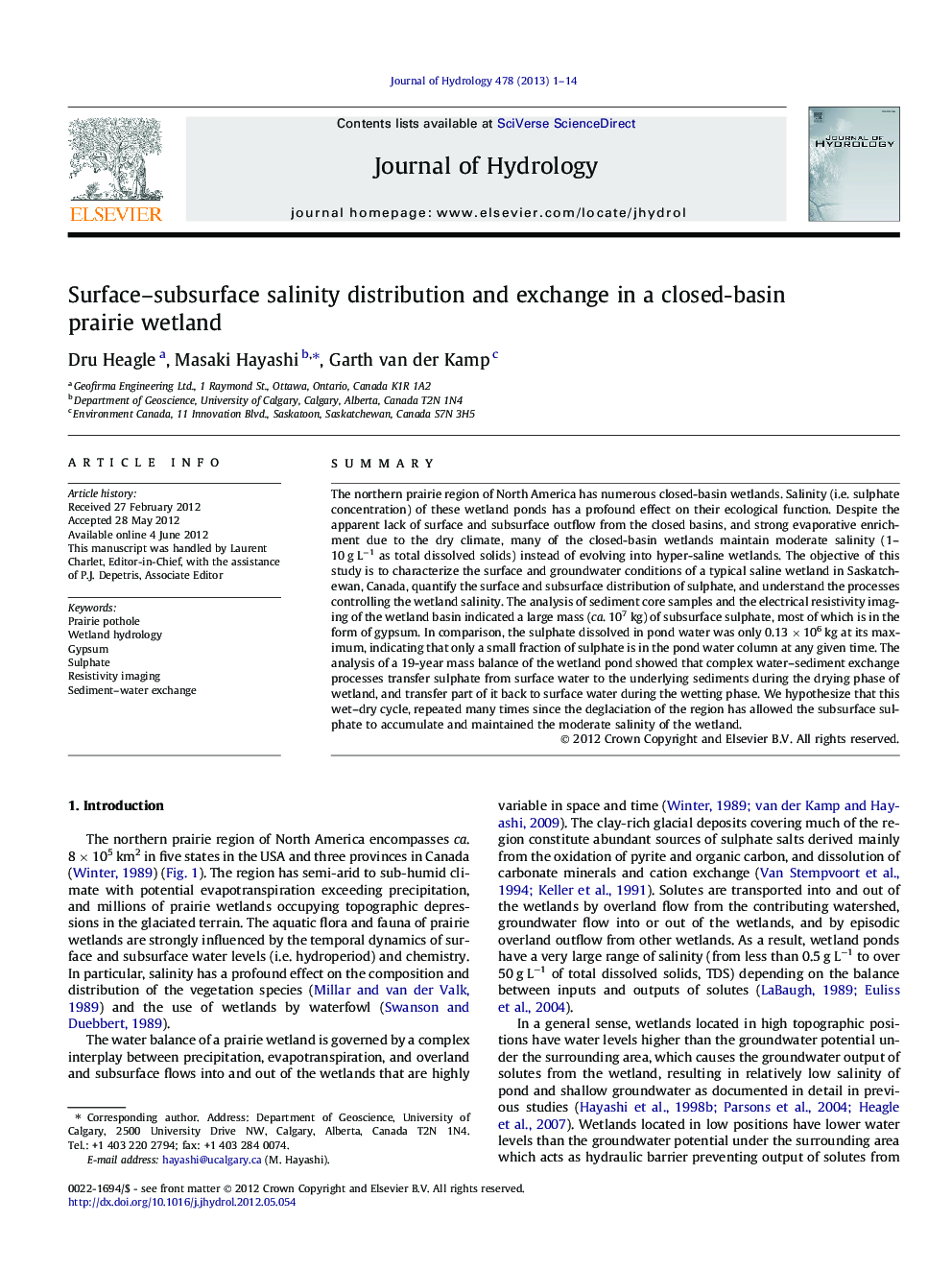| Article ID | Journal | Published Year | Pages | File Type |
|---|---|---|---|---|
| 4576526 | Journal of Hydrology | 2013 | 14 Pages |
SummaryThe northern prairie region of North America has numerous closed-basin wetlands. Salinity (i.e. sulphate concentration) of these wetland ponds has a profound effect on their ecological function. Despite the apparent lack of surface and subsurface outflow from the closed basins, and strong evaporative enrichment due to the dry climate, many of the closed-basin wetlands maintain moderate salinity (1–10 g L−1 as total dissolved solids) instead of evolving into hyper-saline wetlands. The objective of this study is to characterize the surface and groundwater conditions of a typical saline wetland in Saskatchewan, Canada, quantify the surface and subsurface distribution of sulphate, and understand the processes controlling the wetland salinity. The analysis of sediment core samples and the electrical resistivity imaging of the wetland basin indicated a large mass (ca. 107 kg) of subsurface sulphate, most of which is in the form of gypsum. In comparison, the sulphate dissolved in pond water was only 0.13 × 106 kg at its maximum, indicating that only a small fraction of sulphate is in the pond water column at any given time. The analysis of a 19-year mass balance of the wetland pond showed that complex water–sediment exchange processes transfer sulphate from surface water to the underlying sediments during the drying phase of wetland, and transfer part of it back to surface water during the wetting phase. We hypothesize that this wet–dry cycle, repeated many times since the deglaciation of the region has allowed the subsurface sulphate to accumulate and maintained the moderate salinity of the wetland.
► Many closed-basin prairie wetlands have brackish pond, contrary to expectation. ► Majority of sulphate salts in these wetlands are stored subsurface. ► The salinity in surface pond is a very small fraction of total salinity in wetland. ► Wet–dry cycles provide a mechanism for subsurface accumulation of sulphate.
